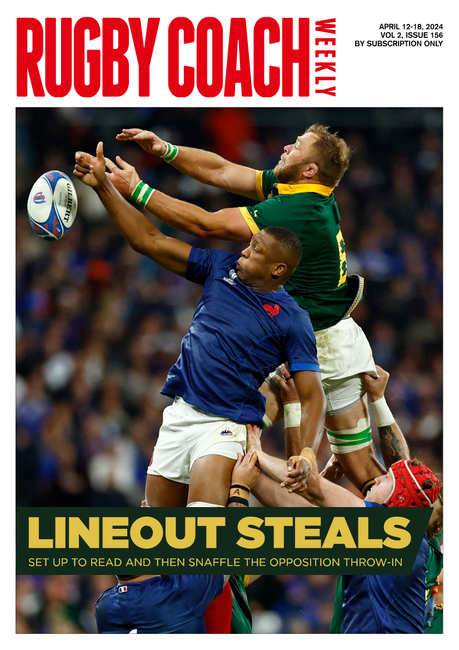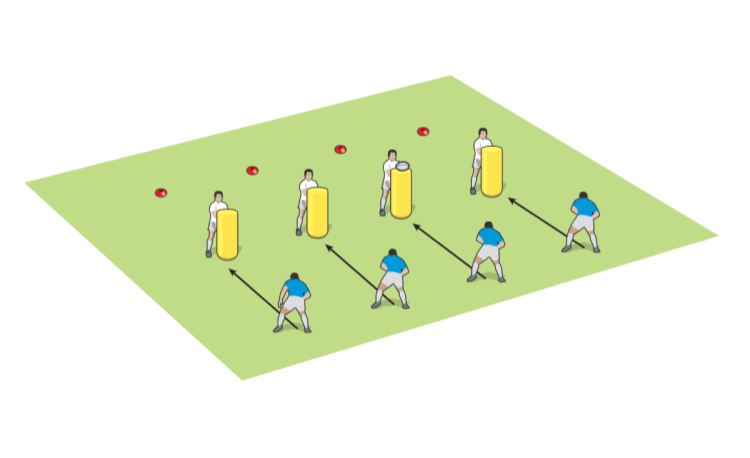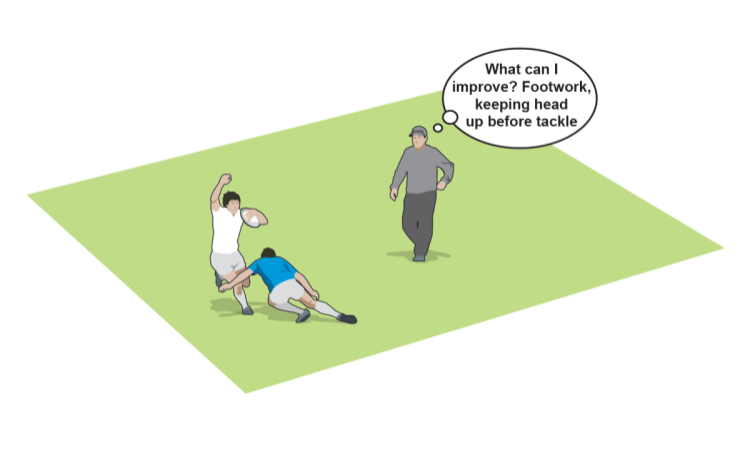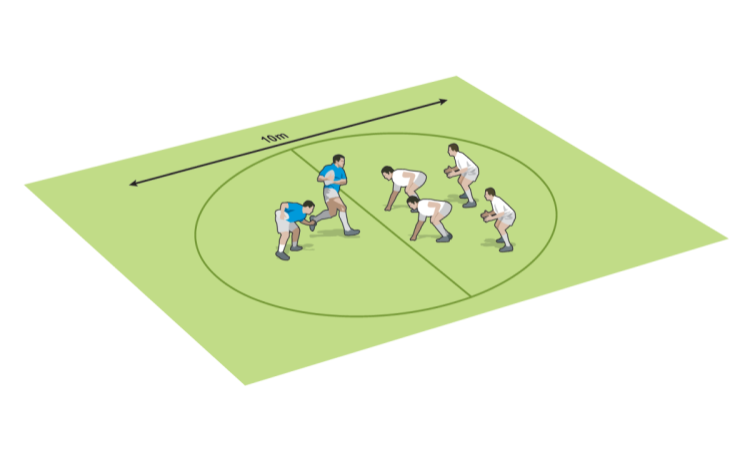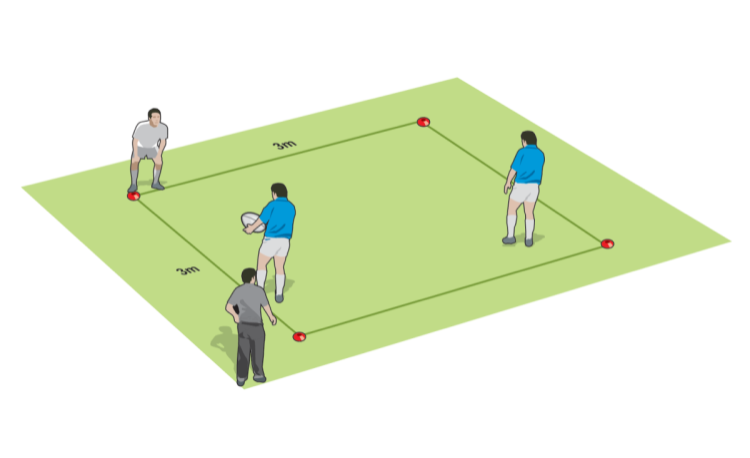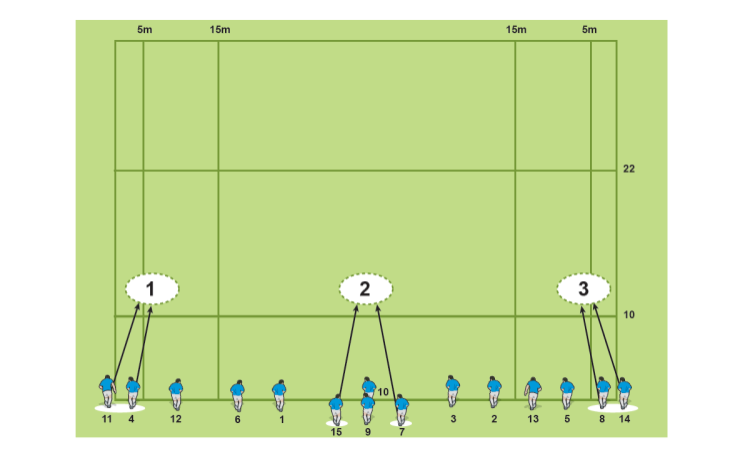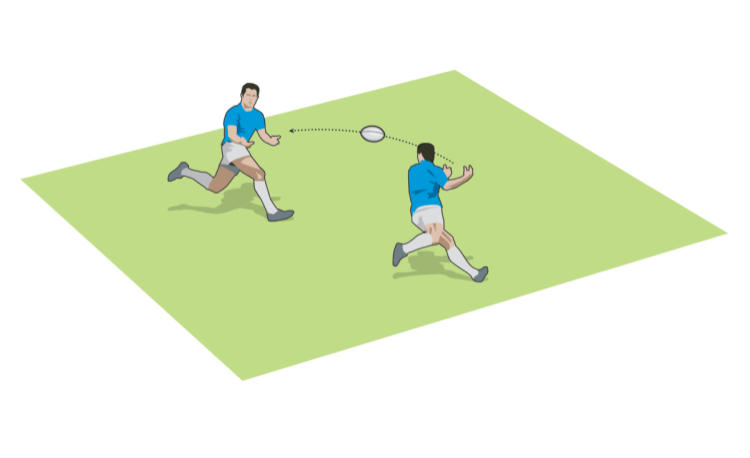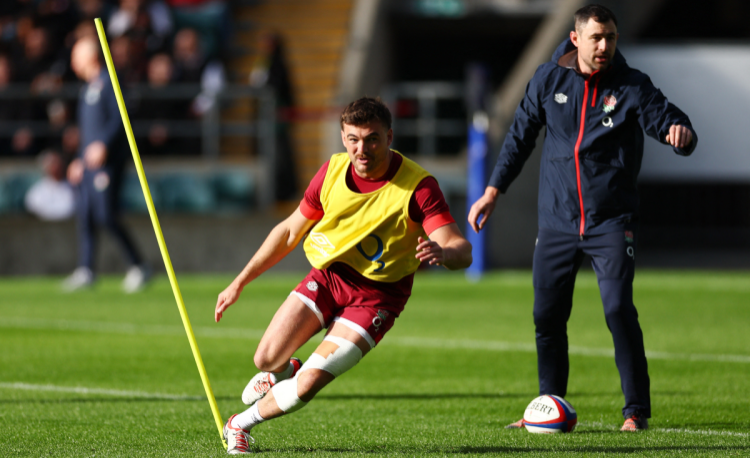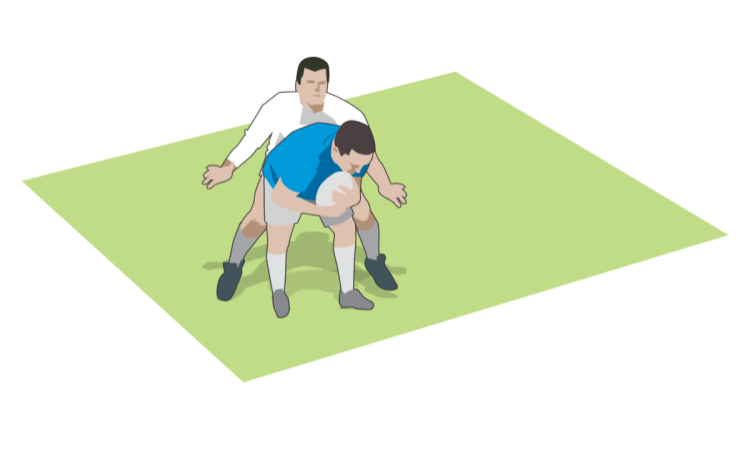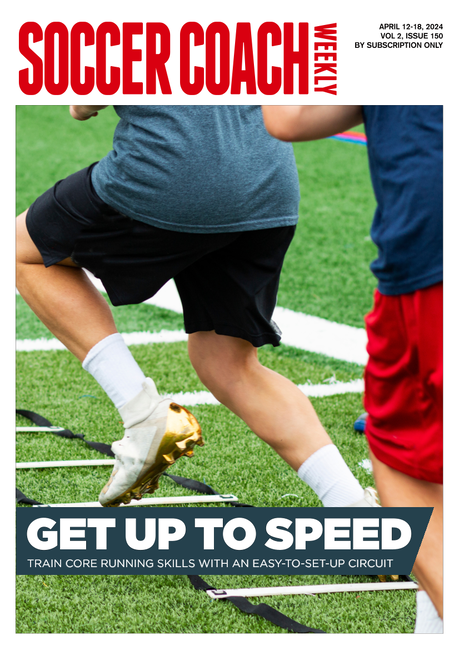You are viewing
1 of your 2 free articles
Minis and juniors tackling triangles
Tacklingby Dan Cottrell
Tackling in pairs helps players work together to bring down the ball carrier, and gives weaker players the confidence to make a contribution in the tackle.
Initially the players don’t know who will run and which players will be making the tackle, plus a bit of competition to score, makes the situations more realistic.

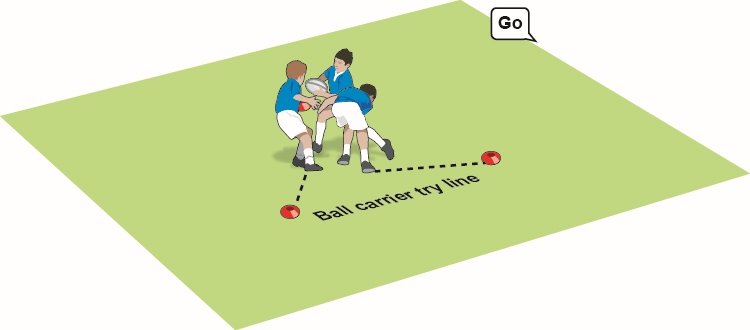
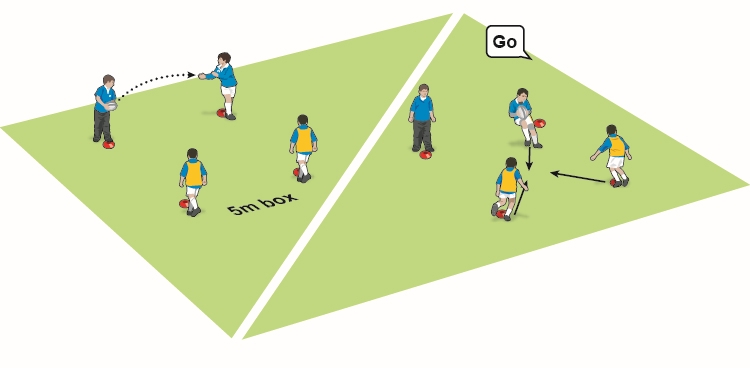
Initially the players don’t know who will run and which players will be making the tackle, plus a bit of competition to score, makes the situations more realistic.

- Put a player on each cone in the triangle, and a ball between three.
- The players pass the ball around the triangle until you shout “go”.

- The player holding the ball has to run over the line opposite him.
- The other two players have to put him on the ground.
- The tacklers score a point for a successful tackle.
- The attacker scores a point from crossing the line on his feet (not putting the ball down).
- Adjust the tackling success depending on your age group rules.

- Develop by having two players passing a ball between each other on the corners of a box.
- A defender stands on each of the other two corners.
- When you say go, the current ball carrier runs forward to score, as in the first exercise.
- Score exactly the same, and keep swapping which pair starts with the ball.
TECHNIQUE
- Step forward to make the tackle.
- Aim to get the head tight to the side of the ball carrier.
- Tight grip.
- Drive the legs after making a tight grip.
Newsletter Sign Up
Coaches Testimonials

Gerald Kearney, Downtown Las Vegas Soccer Club

Paul Butler, Florida, USA

Rick Shields, Springboro, USA

Tony Green, Pierrefonds Titans, Quebec, Canada
Subscribe Today
Be a more effective, more successful rugby coach
In a recent survey 89% of subscribers said Rugby Coach Weekly makes them more confident, 91% said Rugby Coach Weekly makes them a more effective coach and 93% said Rugby Coach Weekly makes them more inspired.
Get Weekly Inspiration
All the latest techniques and approaches
Rugby Coach Weekly offers proven and easy to use rugby drills, coaching sessions, practice plans, small-sided games, warm-ups, training tips and advice.
We've been at the cutting edge of rugby coaching since we launched in 2005, creating resources for the grassroots youth coach, following best practice from around the world and insights from the professional game.


